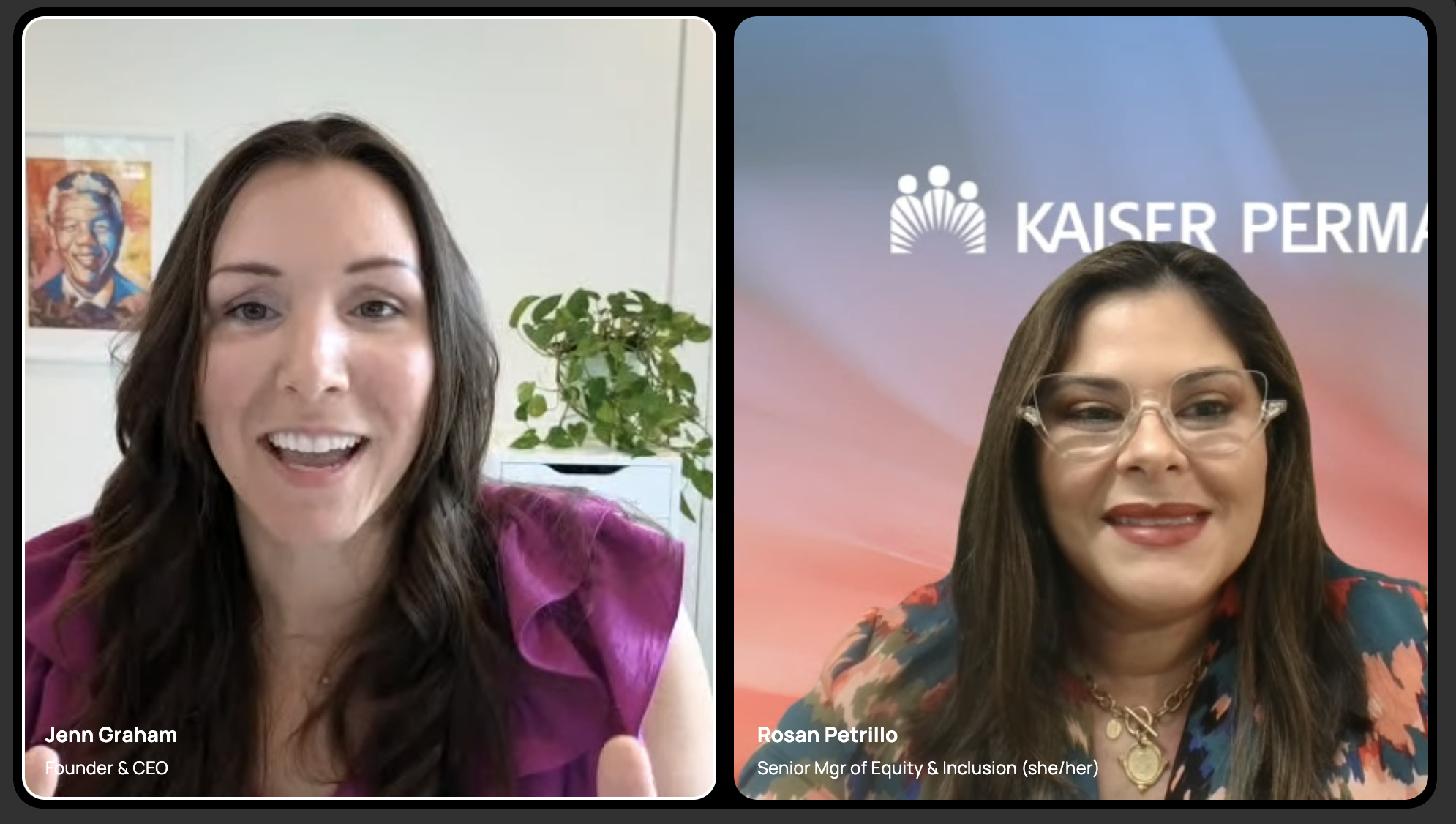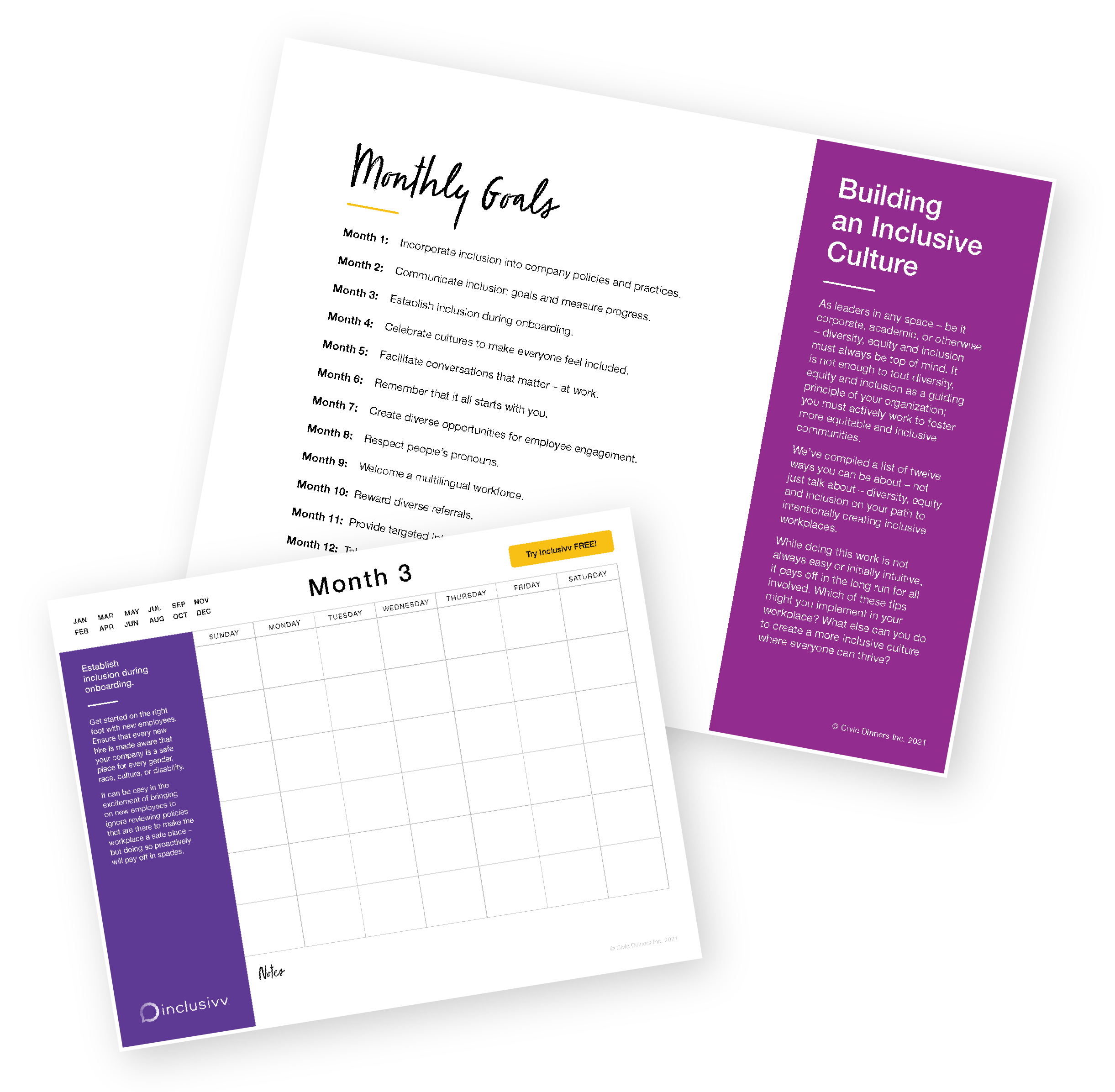Have you ever left a meeting feeling like your voice didn’t matter?
Like maybe it was safer to just stay quiet next time?
If so, you're not alone. And you're not imagining things.
While many organizations talk about inclusion, trust, and teamwork, there’s one often invisible ingredient that determines whether people actually feel safe enough to speak up, share bold ideas, or challenge the status quo: psychological safety.
At Inclusivv, we’ve led hundreds of conversations inside companies and communities. And if there’s one truth we’ve seen over and over again, it’s this:
Psychological safety isn’t built in bold strokes. It’s built in the smallest moments.
In this blog, we’ll explore what breaks psychological safety (and how to rebuild it), the surprising leadership mistake that kills innovation, and why teams don’t need another training. They need brave conversations.
Why Psychological Safety Matters More Than Ever
Workplaces today are more diverse, fast-paced, and interconnected than ever before. That should be a good thing, and it is. But only when the right culture supports it.
Research shows that diverse teams outperform homogeneous ones, but only when psychological safety is high. Without it, diversity can actually lead to more conflict, confusion, and underperformance.
And yet, a 2023 study by Oyster HR found that 84 percent of employees ranked psychological safety as the number one thing they wanted at work, more than flexible hours or higher pay.
That’s a staggering number.
So, if psychological safety is so important, why do so many organizations struggle to build it?
The Truth About Psychological Safety
Let’s get one thing straight. Psychological safety does not mean avoiding tough conversations, holding back feedback, or prioritizing comfort over honesty.
Instead, it means that people feel safe enough to:
-
Share ideas, even if they’re risky
-
Ask questions, even if they seem basic
-
Admit mistakes, without fear of blame
-
Challenge decisions, with respect
In other words, psychological safety is about building a brave space, not just a safe space.
As our CEO Jenn Graham says in our Civility Series:
"Real culture change doesn’t start with a new policy. It starts with a brave conversation."
The Small Moments That Build or Break Psychological Safety
It’s not always obvious when psychological safety is lost. But often, it’s eroded through dozens of small, unspoken moments:
-
A junior employee shares an idea, and it gets ignored until a leader repeats it later as their own
-
Someone asks a clarifying question and gets met with eye rolls
-
A colleague admits a mistake, and their credibility takes a hit
These are the micro-moments that make or break culture. And they’re happening every day on your team, whether you know it or not.
Here are just a few common examples from our training:
| Situation | Unsafe Response | Safe Response |
|---|---|---|
| A team member shares an idea | “That’s not how we do things.” | “Thanks for sharing. Let’s explore that further.” |
| Someone points out a flaw in your work | “You don’t know the full picture.” | “I appreciate you raising that. Let’s talk it through.” |
| A colleague misses a deadline | “You’ve made us all look bad.” | “Thanks for owning it. How can we support you?” |
| A question gets asked in a meeting | “Weren’t you paying attention?” | “Great question. Let’s walk through it together.” |
Small shifts. Big impact.
Leaders Set the Tone Every Day
One of the biggest myths about psychological safety is that it’s an HR issue. In reality, it’s a leadership issue, and a daily one at that.
According to Amy Edmondson, the Harvard professor who coined the term, psychological safety is built when leaders consistently do four things:
-
Set the Stage — Clarify that risks and mistakes are expected
-
Invite Participation — Ask for input, especially from quieter voices
-
Respond with Appreciation — Celebrate contributions, even dissent
-
Model Vulnerability — Admit when you don’t have the answer
These aren't one-time efforts. They’re daily habits.
And the stakes are high. Psychological safety isn’t just about feelings. It’s about performance. Teams with high psychological safety report:
-
20 percent higher productivity
-
22 percent higher profitability
-
Stronger innovation, collaboration, and retention
What Breaks Psychological Safety and What You Can Do About It
Let’s break down five of the biggest threats to psychological safety and how you can address them in your workplace starting today.
1. Microaggressions and Bias
Whether it’s mispronouncing someone’s name or assuming someone’s job title based on how they look, these small slights add up fast.
What to do:
-
Speak up when you see bias, even if it’s uncomfortable
-
Normalize using inclusive language
-
Learn names and ask about pronouns
2. Power Dynamics
No matter how flat your org chart looks, power still exists. When leaders speak first or take over conversations, people stop speaking up.
What to do:
-
Hold your opinion until others have shared
-
Say things like “I’ll go last because I want to hear your thoughts first”
-
Acknowledge your position by saying “I know my role might make it harder to speak up, but I’d value your input”
3. Fear of Retaliation or Exclusion
If speaking up results in being left off a project or punished in other ways, people will stay silent.
What to do:
-
Thank people for their honesty, even when it is hard to hear
-
Celebrate respectful disagreement
-
Make it clear that every voice matters
4. Anchoring Bias
When senior leaders share first, it can anchor the conversation and limit creativity.
What to do:
-
Use anonymous idea submissions or reverse brainstorming
-
Rotate who leads meetings
-
Ask what bold ideas haven’t been considered yet
5. Lack of Follow-Through
When someone shares an idea and never hears back, trust is broken.
What to do:
-
Use anonymous feedback boards or tools
-
Review and act on submissions publicly
-
Fix what you can, and explain what you can’t
Why Brave Spaces Matter More Than Safe Spaces
Psychological safety starts with minimizing harm, but it thrives when we also embrace discomfort and growth.
At Inclusivv, we use the BRAVE Framework to help teams move from cautious politeness to honest and transformational dialogue.
The BRAVE Framework
-
Balance — Ensure all voices are heard
-
Respect — Honor lived experiences
-
Assume Positive Intent — Lead with curiosity
-
Voice — Use “I” statements to speak your truth
-
Explore — Stay open to challenge and growth
A Brave Space is where someone can say:
"I noticed we keep assigning the note-taking role to women. Can we talk about that?"
And instead of defensiveness, the room leans in with curiosity.
A Real Story From our Client
At Kaiser Permanente of Georgia, they didn’t roll out a flashy new training program to improve psychological safety.
They did something much simpler and more human. They started a structured peer-to-peer conversation.

Led by Rosan Petrillo, Senior Manager of Equity, Inclusion, and Diversity, one team that had been stuck for months experienced a breakthrough, in just one dialogue.
"What made the difference was just letting them talk."
Barriers came down. People shared openly. Trust began to rebuild. One conversation made all the difference.
Learn more about our work with Kaiser Permanente of Georgia here.
Want to Build Brave Spaces in Your Workplace?
Our On-Demand Civility Series can help you do exactly that. This four-part, self-paced learning experience equips your teams to build trust, navigate hard conversations, and foster a more inclusive culture.
Here’s what’s inside:
-
Modules on Conflict Resolution, Emotional Intelligence, Psychological Safety, and Essential Mindsets
-
Bite-sized video lessons and real-world examples
-
Conversation guides, reflection tools, and action checklists
-
A ready-to-rollout platform for HR and team leads
This isn’t theory. It’s actionable, proven content designed for real teams working in real environments.
Learn more about our On-Demand Civility Series here.
Final Key Takeaway
You don’t need to launch a massive program or rewrite your values to improve psychological safety.
You just need to start noticing the small moments.
-
Thank someone for sharing a risky idea
-
Admit when you’re wrong
-
Make space for someone who hasn’t spoken yet
-
Celebrate a good question, not just a good answer
Because every brave conversation is a step toward a healthier, more human workplace. And those steps add up.


.png)
